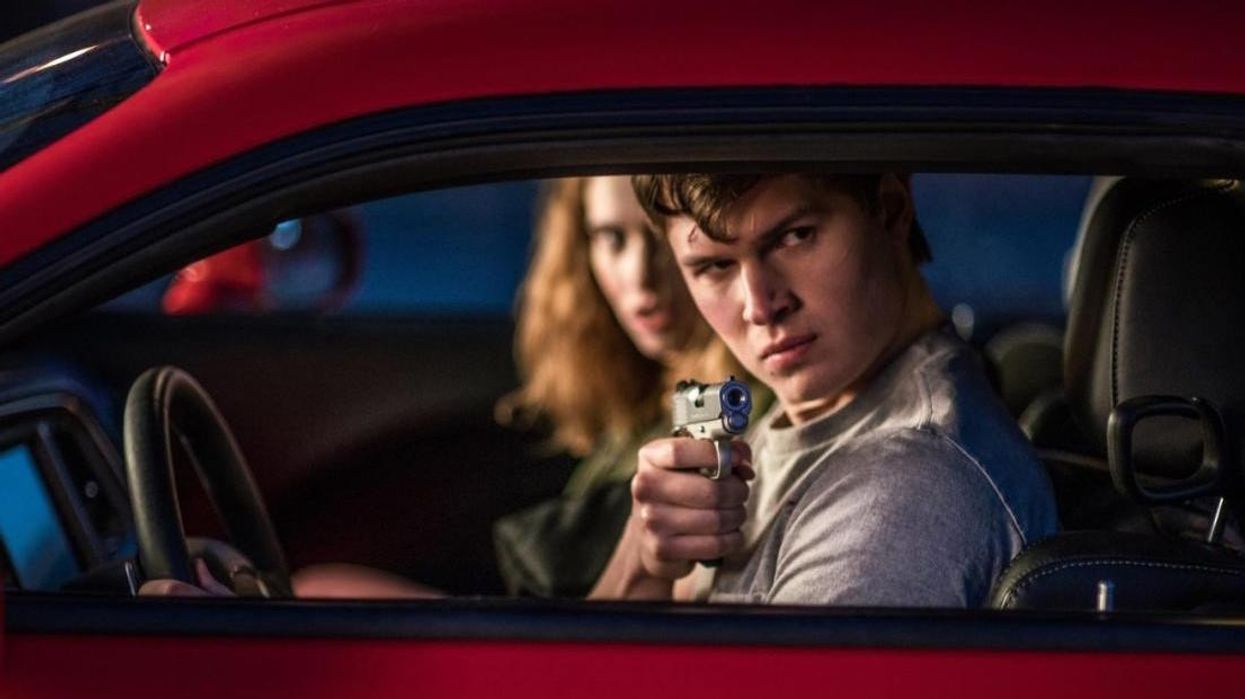Watch: What Makes a Great Chase Scene?
'Baby Driver' shows that the key to a great car chase might be more complex than you think.

The best car chase scenes, like bridges in classic songs, move viewers from one part of a film to another. Rather than being merely vehicles to fill otherwise unassigned screen time, they can tell audiences a lot about the inner workings of the movie you're making.
Two recent video essays, both prompted by the release of Edgar Wright's thrill-o-rific Baby Driver, look into the deceptively simple question of what makes a good car chase.
The Art of the Car Chase
"The Art of the Car Chase," on the Rossatron YouTube channel, methodically breaks down the crucial components of the best car chase scene. The essayist starts by stating two questions that any filmmaker should pose and answer with the scene:
- Why is it being done?
- How is it being pulled off?
The essayist holds that unless there's some palpable reason why the car chase is there, its effectiveness in a film might be negligible. A chase could show anything: characters' skills and abilities, the personal challenges they face, what point they're at in the arc of the plot, or even what the stakes are for their actions within a story. He cites William Friedkin's The French Connection as a film in which the characters' recklessness was an indication of their desperation, of the feverish point to which the story's events had pushed them.
The match of cut to cut to cut can make the difference between a generic throwaway scene and a masterpiece.
However, and this is a big however: safety first, to quote Buster Keaton! The essayist suggests that as car chases have become safer over time, with the introduction of CGI and other effects to replace the real-live cars movies like The French Connection or even Ronin used, they have become less effective and less believable.
For the how part of the essay, we can see, in the scenes selected, how important rhythm in editing is, how the match of cut to cut to cut can make the difference between a generic throwaway scene and a masterpiece (see any number of scenes in the most recent Mad Max film). Geography is important to the how of car chases too, but it's only as important as the editor makes it, through how the pieces of that setting are revealed to viewers.
What Makes a Good Car Chase Scene?
Nelson Carvajal offers just as much instruction as this piece does in his latest video essay for Fandor, "Baby Driver: What Makes a Good Car Chase?" The difference here is that his teaching is through the lens of a critique that shows us pitfalls filmmakers tend to make with their chase scenes.
If there's one most important lesson you can take away from Carvajal's piece, it's this: focus.
Look at how the camera inhabits the chase scene and doesn't let us think about anything but the motion of the car.
Don't distract from the chase at hand through the cute cutaways, the glib dialogue, or the absurd scenarios that have cursed Michael Bay's films and the Fast and the Furious franchise. Take a lesson from other films, like, say, Baby Driver. Look at how the camera inhabits the chase scene and doesn't let us think about anything but the motion of the car. Look at the way the numerous vroom-vroom scenes in the film have been choreographed to their respective soundtracks. There's care and attention there, but it serves the scene—the movie's cleverness doesn't get in its own way.
Late in the piece, Carvajal calls the car chase, as a technique, "visceral." Visceral it is—and the lesson in this piece is that if you're going to include such a scene in your film, own its viscerality. Focus on it. Polish it. Let there be no element in the chase scene that does not enhance the spirit of the chase. Carvajal even shows, towards the end of the piece, how the lack of a soundtrack can become an asset to a chase scene, as in the classic Bullitt, whose only music is the noise an engine makes when the gas is pressed all the way to the floor. That's the music of a well-honed chase scene and, in its own way, of artistic purity.
What's your favorite car chase scene of all time? Let us know in the comments.












